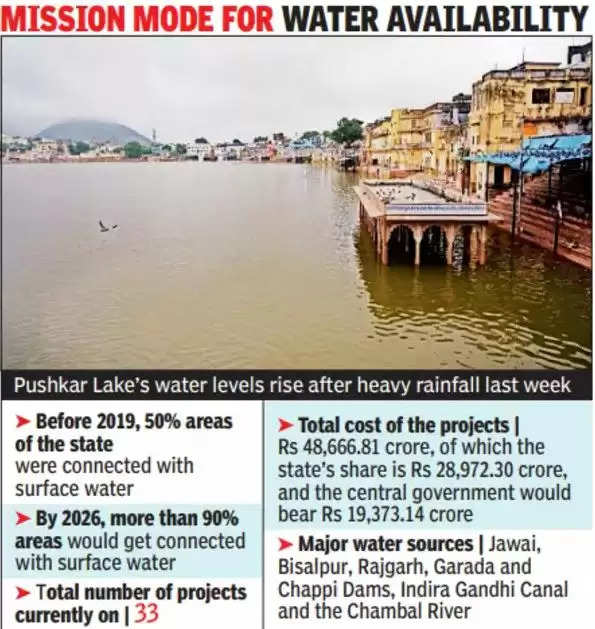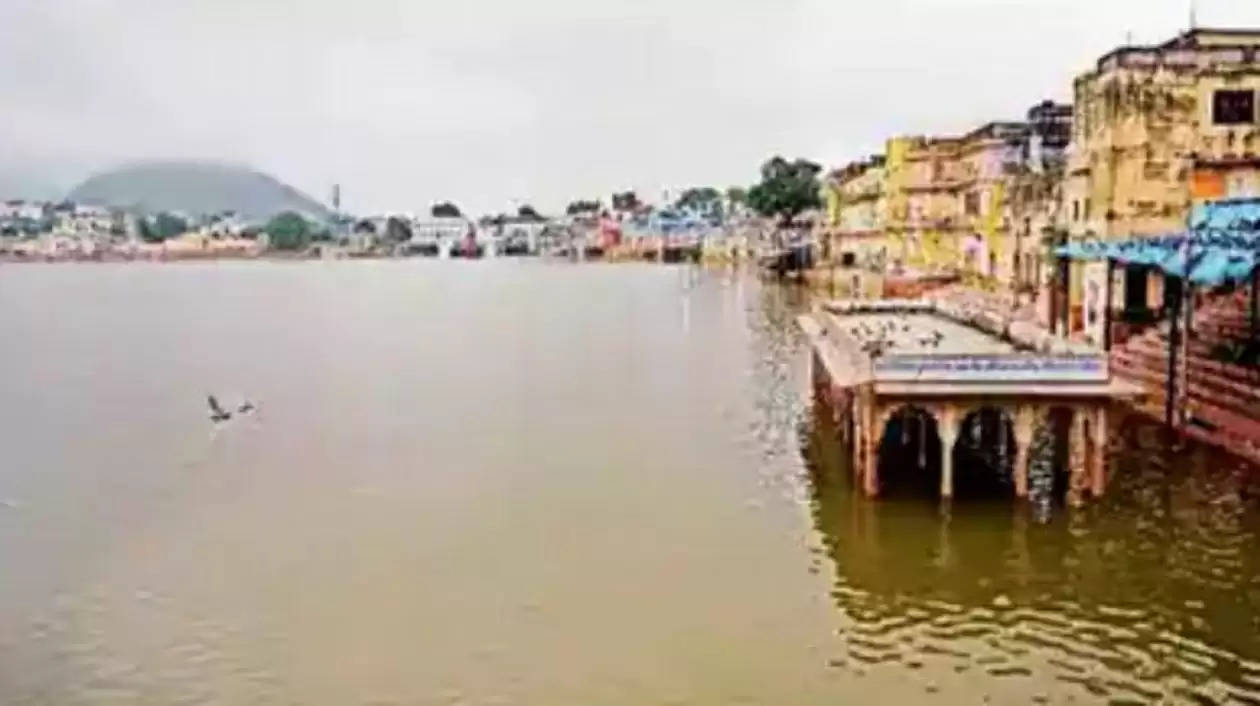Rajasthan aims to connect 90% of its regions with surface water by 2026
Areas in Udaipur, Sirohi, Banswara, Pali, and Sri Ganganagar can rely on their groundwater sources for a certain number of years
By virtue of the Jal Jeevan Mission (JJM) initiated by the central government and the state government's proactive approach to reduce reliance on groundwater, over 90% of Rajasthan's regions are projected to be linked with surface water sources by 2026. According to engineers from the Public Health and Engineering Department (PHED), prior to the implementation of the Jal Jeevan Mission (JJM) in 2019, merely 50% of locations in Rajasthan were connected to surface water sources. This made Rajasthan one of the states in India with the highest dependence on groundwater. However, with the concerted efforts under the JJM, significant progress is anticipated as more than 90% of areas in Rajasthan are expected to be connected to surface water sources by 2026.
“In the last four years, the state government has approved 33 surface water projects. If everything works fine, we are going to complete all projects by 2060. Once they are completed, 90% areas in Rajasthan would get connected with surface water.” - PHED Chief Engineer (special projects) Dinesh Goyal.

As per officials from the Public Health and Engineering Department (PHED), a total of 33 projects have been identified, with a collective cost of Rs 48,666.81 crore. Among these projects, the state's share amounts to Rs 28,972.30 crore, while the central government has committed to bearing Rs 19,373.14 crore. Although the majority of areas in Rajasthan are set to shift their reliance to surface water sources, approximately 10% will still depend on groundwater. Notably, 5% of this portion comprises sections of Alwar district and neighboring areas of Jaipur district.The remaining 5% encompass specific areas within the districts of Udaipur, Sirohi, Banswara, Pali, and a portion of Sri Ganganagar district.
During the implementation of connections under the Jal Jeevan Mission (JJM), the Public Health and Engineering Department (PHED) established a committee to assess the groundwater availability and sustainable water sources in each district. Officials have stated that the committee concluded that the areas in Udaipur, Sirohi, Banswara, Pali, and Sri Ganganagar can rely on their groundwater sources for a certain number of years. This finding suggests that these areas have sufficient groundwater reserves to sustain their water requirements for the foreseeable future.
“However, for areas of Alwar and Jaipur district we have to switch to surface water. Eastern Rajasthan Canal Project (ERCP) would solve the problem. But it has been delayed due to clearance from the central government.” - said Goyal
Officials have highlighted that apart from diminishing reliance on groundwater, the implementation of these projects will effectively enhance the quality of drinking water in the areas that will be connected to surface water sources. Notably, a recent report compiled by the chemists of the Public Health and Engineering Department (PHED) assessed the water quality in urban areas of Rajasthan. The report reveals that in certain towns and cities, the water quality remains unsuitable for drinking purposes.
Source: Times Of India
To join us on Facebook Click Here and Subscribe to UdaipurTimes Broadcast channels on GoogleNews | Telegram | Signal



